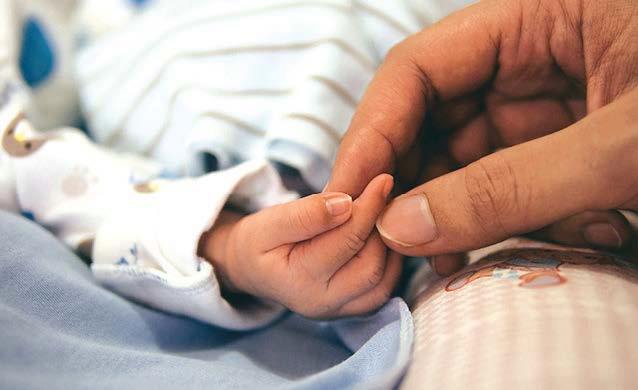WASHINGTON – Coming soon to a jungle near you – mosquitoes genetically engineered so they cannot give people malaria.
But this time scientists want to do it right. Mindful of labels like “Frankenfoods” given to genetically modified crops, and of attacks against test patches of gene-engineered plants by environmental militants, they hope to reassure the public about their newly created insects.”I think we have reached quite a critical point in the development and use of these organisms,” said Anthony James, a professor of microbiology and molecular genetics at the University of California, Irvine.James, whose lab is working on mosquitoes that could not host the malaria parasite, said some strains are ready to be tested outside the lab.”We need to identify the next level in this whole adventure,” he told reporters in a telephone briefing.James and other experts in entomology, genetic engineering, disease and regulation were meeting on Tuesday to talk about what they need to watch out for as they develop and test biotech bugs.Scientists have a history of getting it wrong, even as they try to save the world from insect-borne scourges, said entomologist Fred Gould of North Carolina State University.”In the late 1940s entomologists had no reason to doubt that DDT would cure the world’s pest problems,” he told a conference sponsored by the Pew Initiative on Food and Biotechnology.DDT, it turned out, affected a range of animals and drove some bird species to near-extinction by weakening their eggshells.”In the 1960s, advocates of biological control did not consider that imported predators of insect pest species might cause extinction of rare species,” Gould added.Researchers need to look for unexpected side-effects, said Dr.Ravi Durvasula, medical director of Yale University Health Services.”It’s not just (a question of) efficacy here.It’s an issue of perception, it is an issue of risks to the environment,” he said.”Once it is out there … the perception tends to get set in stone,” agreed Mark Mansour, a healthcare regulation expert at the law firm Morgan Lewis.As many of the genetically altered creatures are meant for release in the developing world, it is important to set up global regulations in safety and licensing, Mansour told the meeting, available as a webcast on the Internet at http://www.pewagbiotech.org.And local input is key.”What we need to do is develop a catalogue of what the concerns are,” James said.”Scientists are going to have different lists from people who do legal work, people who are ministers of health, people who are looking for votes.”Then, before any creature is field-tested, those concerns must be addressed, James said.Durvasula’s team is working to develop a kissing bug that cannot carry Chagas disease, which can lead to a range of problems from heart disease or digestive tract malfunctions and which kills 50 000 people a year in Latin America.Instead of affecting the bug itself, Durvasula’s approach is to alter a bacterium that allows the bug to carry the trypanosomiasis parasite.But modifying bacteria is different from modifying an insect, given that bacteria can freely exchange genes with a range of other bacteria and even viruses, he said.- Nampa-ReutersMindful of labels like “Frankenfoods” given to genetically modified crops, and of attacks against test patches of gene-engineered plants by environmental militants, they hope to reassure the public about their newly created insects.”I think we have reached quite a critical point in the development and use of these organisms,” said Anthony James, a professor of microbiology and molecular genetics at the University of California, Irvine.James, whose lab is working on mosquitoes that could not host the malaria parasite, said some strains are ready to be tested outside the lab.”We need to identify the next level in this whole adventure,” he told reporters in a telephone briefing.James and other experts in entomology, genetic engineering, disease and regulation were meeting on Tuesday to talk about what they need to watch out for as they develop and test biotech bugs.Scientists have a history of getting it wrong, even as they try to save the world from insect-borne scourges, said entomologist Fred Gould of North Carolina State University.”In the late 1940s entomologists had no reason to doubt that DDT would cure the world’s pest problems,” he told a conference sponsored by the Pew Initiative on Food and Biotechnology.DDT, it turned out, affected a range of animals and drove some bird species to near-extinction by weakening their eggshells.”In the 1960s, advocates of biological control did not consider that imported predators of insect pest species might cause extinction of rare species,” Gould added.Researchers need to look for unexpected side-effects, said Dr.Ravi Durvasula, medical director of Yale University Health Services.”It’s not just (a question of) efficacy here.It’s an issue of perception, it is an issue of risks to the environment,” he said.”Once it is out there … the perception tends to get set in stone,” agreed Mark Mansour, a healthcare regulation expert at the law firm Morgan Lewis.As many of the genetically altered creatures are meant for release in the developing world, it is important to set up global regulations in safety and licensing, Mansour told the meeting, available as a webcast on the Internet at http://www.pewagbiotech.org.And local input is key.”What we need to do is develop a catalogue of what the concerns are,” James said.”Scientists are going to have different lists from people who do legal work, people who are ministers of health, people who are looking for votes.”Then, before any creature is field-tested, those concerns must be addressed, James said.Durvasula’s team is working to develop a kissing bug that cannot carry Chagas disease, which can lead to a range of problems from heart disease or digestive tract malfunctions and which kills 50 000 people a year in Latin America.Instead of affecting the bug itself, Durvasula’s approach is to alter a bacterium that allows the bug to carry the trypanosomiasis parasite.But modifying bacteria is different from modifying an insect, given that bacteria can freely exchange genes with a range of other bacteria and even viruses, he said.- Nampa-Reuters
Stay informed with The Namibian – your source for credible journalism. Get in-depth reporting and opinions for
only N$85 a month. Invest in journalism, invest in democracy –
Subscribe Now!








